Build a taxonomy using PoolParty CardSorting
This is rather an unusual article for me, as I don't generally talk in detail about other company's tools. What's different in this case is that I originally invented the tool, and it has subsequently been taken on and developed by Semantic Web Company. So you might say I have skin in the game. I should say, by the way, that this article is not meant to be software documentation, so it's not a comprehensive description, just a perspective on how it works from a taxonomist's viewpoint.
Anyway, if you are a PoolParty user there is now (as of version 8, released around the end of 2020) a simple way to involve general business users in the development of your taxonomies. It's called PoolParty CardSorting.
For many years I have used real life card sorting as a tool for building information structures, such as web navigation schemes and, more recently, taxonomies. Card sorting in a nutshell is a technique for getting a team of experts to brain-dump their knowledge in the form of concise topics onto a collection of index cards. An information architect then takes those topics and uses them as the seed corn to develop an information system.
In practical terms, a card sorting session might go like this: a team of subject matter experts gets together in a room, armed with nothing more than a set of pens, index cards and their wits. In the first stage of a card sort, and working individually, each team member writes a set of cards. Each card has just one idea or topic written on the front (they might use the back of the card to expand or explain the idea). After 30 minutes or so on this activity, the session moves to the second stage. Here the team works together to discuss, approve or reject the cards, and to organise the approved cards into ordered groups. Finally, the information architect or taxonomist (who has been on hand throughout to keep things moving and to help where needed) captures the collection of cards and transcribes them into an information system. I usually take photos to help me remember the grouping and hierarchies.
This is a venerable and widely used technique, and it works very well as a way of involving non-taxonomists in taxonomy development. However, it has some drawbacks.
- As a practical real-world technique, everyone has to be in the room at the same time. It's difficult for distributed teams to work together on a card sort.
- A card sorting session tends to be a one-time event. It's not usually practical to leave the cards laying around for several days and have people come back to them several times (though if it's possible it certainly helps make a better product).
- The final step, of capturing the state of the card sorting session and transcribing maybe several hundred cards into an information system, is a tedious and manually-intensive process (or, as I more often call it, a pain in the fundament).
So a while back I started to think about whether it would be possible to develop a way to do card sorting online, to enable a geographically-distributed team of people to work in real time or asynchronously to build a taxonomy directly into an electronic system.
In principle this could all happen in PoolParty. It is feasible to have a group of people all working in the same PoolParty project, adding, modifying and deleting concepts. It's not a good idea, though. The PoolParty user interface is primarily designed for use by taxonomists, and it can be quite a learning curve for general business users. It's also difficult to track progress, and there is no option for users to discuss or exchange ideas.
I had in mind something different; an interactive, asynchronous, multi-user workspace where people who are not taxonomists could write, drop and move cards around, together with a way of approving and a mechanism for dragging approved cards directly into a taxonomy. Knowing that PoolParty has a pretty good developer API I started to design a web-based application to do this.
A nod here, to the very talented Joe Pritchard of Var Digital, who was the coding wizard on this project. Together we created a working product, which caught the eye of Semantic Web Company. They subsequently took on the further development of the product and have now incorporated it into the PoolParty Semantic Suite of tools.
Anyway, the main aim of this article is to tell you how it works from the perspective of a taxonomist.
Setting things up
When using PoolParty CardSorting to create a taxonomy, there is a bit of preparatory work to do.
- You need an existing PoolParty project to act as the repository for your cards. It may be a new empty project or one that is already partially populated.
- You need to set up a new CardSorting session, and point it to the existing PoolParty project.
- The users who are going to take part in the session will need to have accounts in the CardSorting system.
- Before conducting the real card sorting session, you may want to do a demo of the software to the team using an online conferencing tool like GoToMeeting or Zoom. That way, when it comes to the real work, the team is already familiar with how the tool works.
Running the session
In the example below, the card sorting session is for a fictional insurance company. So the team taking part have some kind of expertise in different aspects of insurance, and their contribution to the session will be to create cards based on their knowledge.
Here is a screenshot from the sessions listing, which is what you see when you log in.
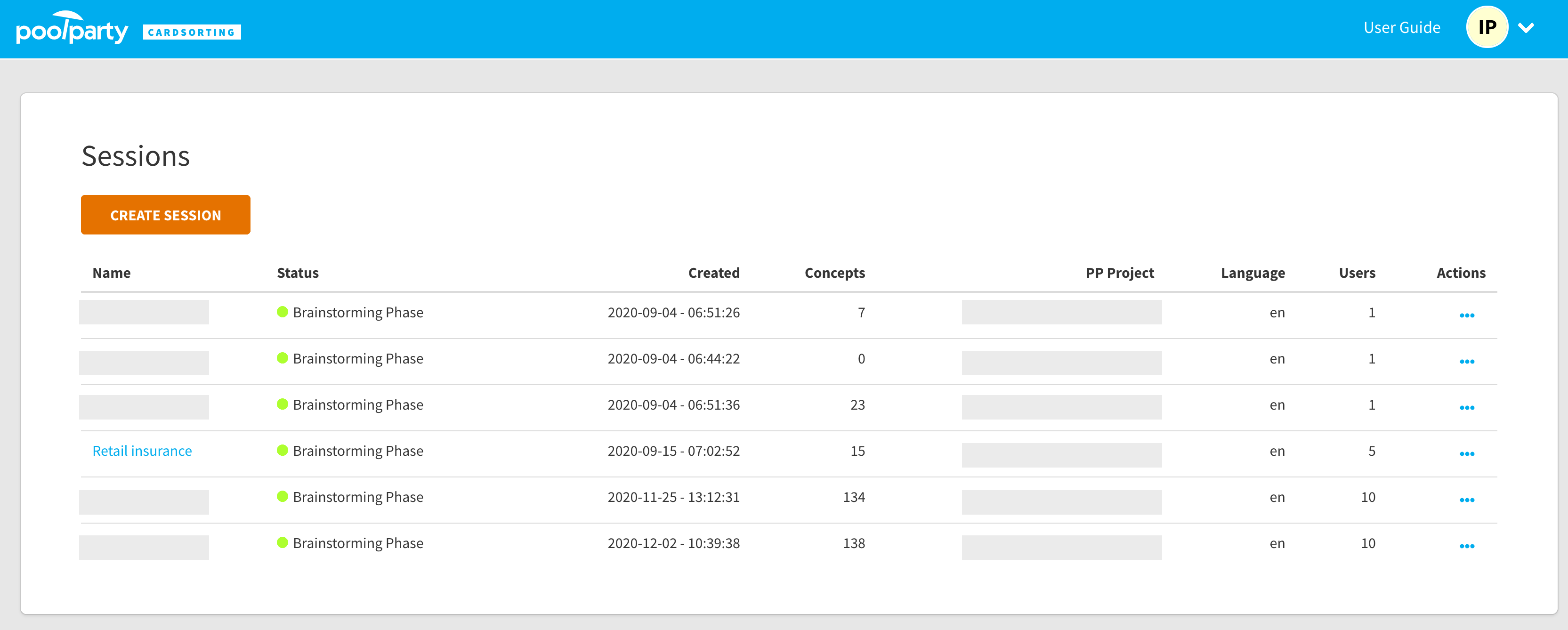
This shows a list of all of the card sorting sessions to which you have access. You'll also see the current status (more on this later), creation date, the current number of cards, the PoolParty project behind each session, the language (CardSorting creates multi-lingual taxonomies) and the number of users. CardSorting application allows for a maximum of ten users in any session. In practice I have rarely found this to be a problem; large teams of people can make the card sorting process quite unwieldy, and I usually aim to have 5-10 people as an optimum team size.
You invite people to join a session using the three-dots Action menu to the right. You can choose someone from the existing set of CardSorting users, or you can invite a new user via their email address:
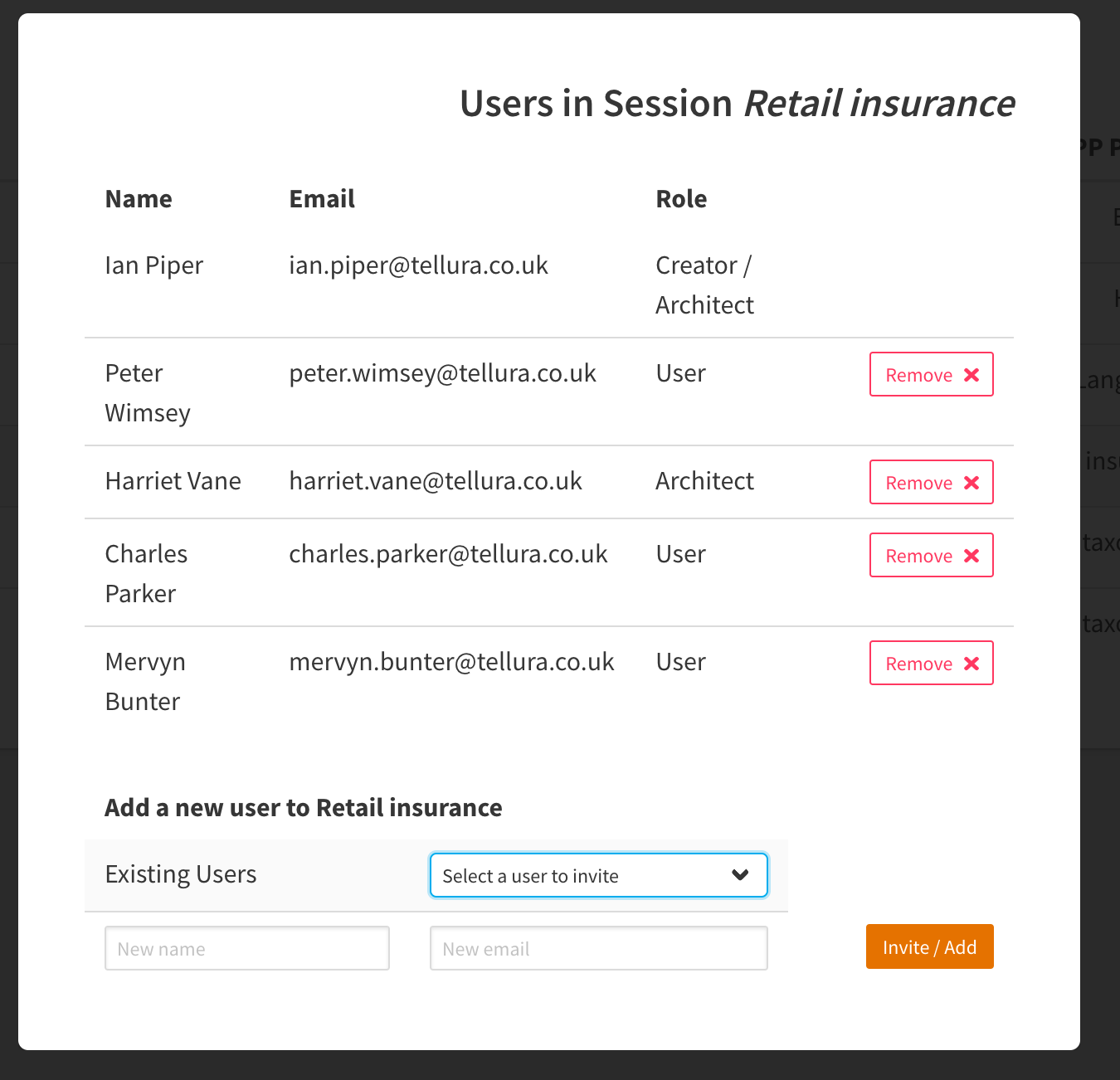
The new user will receive an invitation email, with a link to a confirmation page where they can set a password. They will then see this session as an available session when they log in.
It's worth mentioning here that a CardSorting session can be conducted in real time (like a real-life card sort), or people can log in as and when they wish over, perhaps, several days. Each person logs in from their own computer, but sees the same workspace, and the cards and locations are preserved between login sessions.
From the main sessions list, clicking on a session name (Retail insurance in this case) takes you to the Brainstorming Phase window. This screenshot shows this phase in progress.
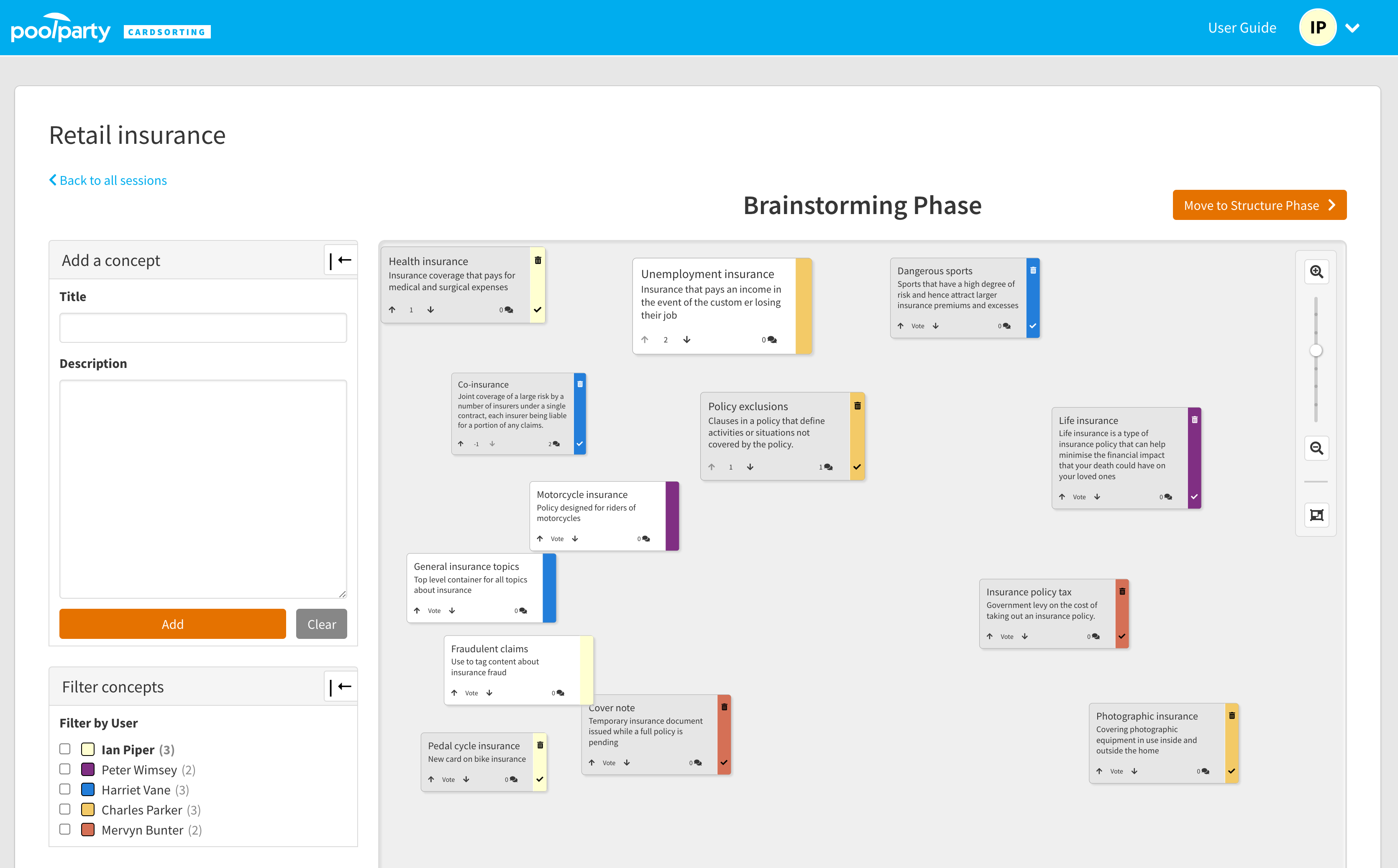
The workspace you see above is where the team members add their ideas. Each idea has a title and optionally a description. The coloured band to the right of each card indicates the person who has created it. Should you want to see just one person's cards, you can check the box next to their name at the bottom left, and the cards from other people dim down. Here are Charles Parker's cards, for example:
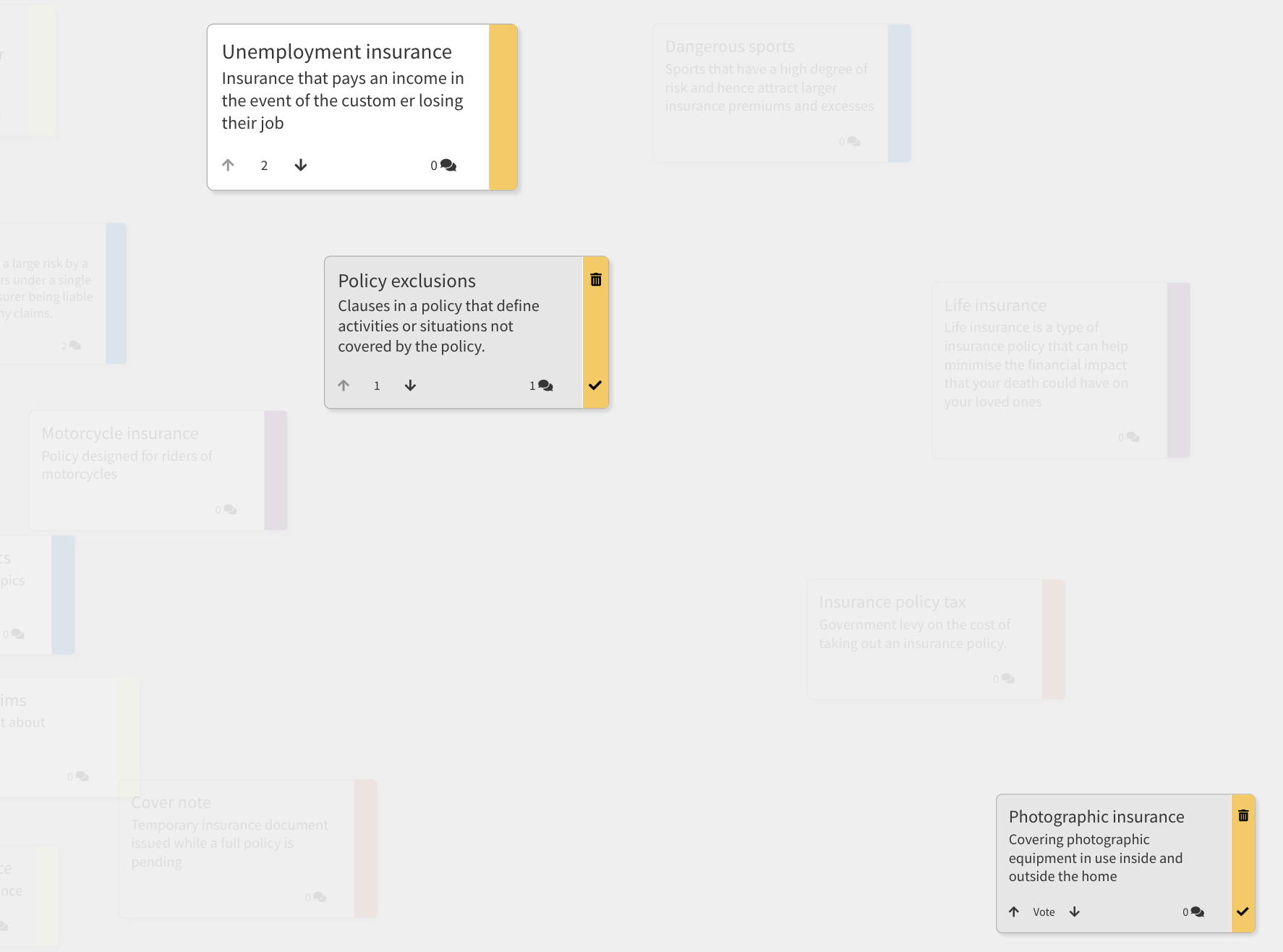
This gives you a simple way to focus on individual team member's contributions.
You can move cards around the workspace to visually group them together. As you do so, every member of the team will see the move; it's a real-time multi-user environment. If the workspace starts to fill up, you can drag the workspace (it's essentially a viewport onto an infinite canvas) and you can zoom in and out to see more or less detail.
You can interact with other users to discuss your cards. Clicking on the quote icon opens a chat window, which stores any comments made by you or other users:
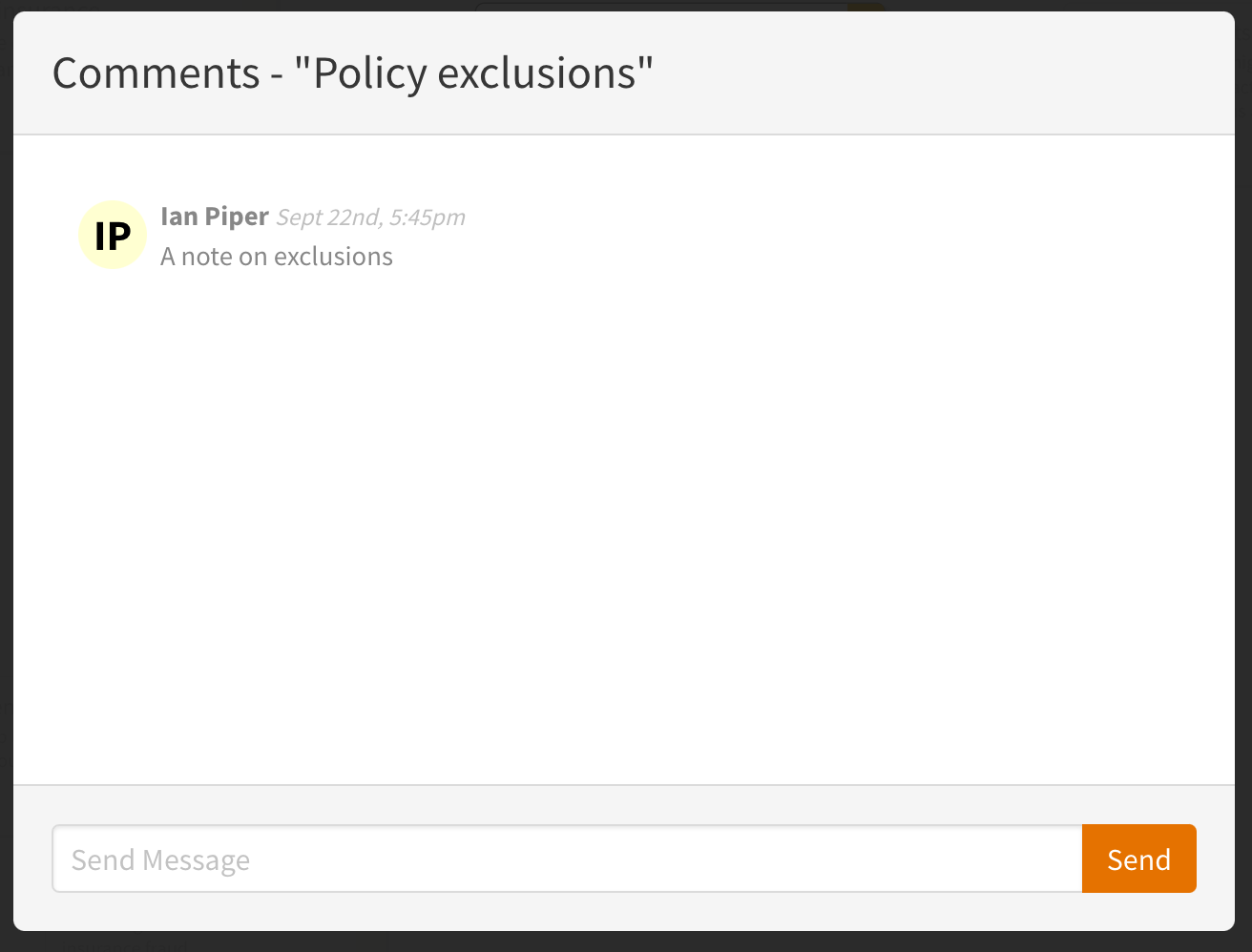
You can also upvote and downvote your own and other people's cards. You only get one upvote or downvote per card; no vote-packing here. The numbers on the card indicate how many comments and how many votes it has received.
So at this stage in the session we have a number of cards that have been added, discussed and voted up or down. If the consensus is that a card doesn't belong, the dustbin icon can be used to delete the idea. If everyone likes a card, the tick icon approves it. Once approved, a card changes its appearance; It gets a white background and it can no longer be deleted. Behind the scenes, the card has for the first time a life outside of CardSorting, because it has been created as a new concept in PoolParty. It doesn't yet have a specific location in PoolParty; that happens in the next step.
Once a card has been approved, it is visible in the Structure phase workspace. That is where you can take an approved card and add it directly into the PoolParty taxonomy hierarchy. Let's take a closer look at that.
Moving to the Structure phase, you can see that only the cards that were approved in the Brainstorming phase are visible.
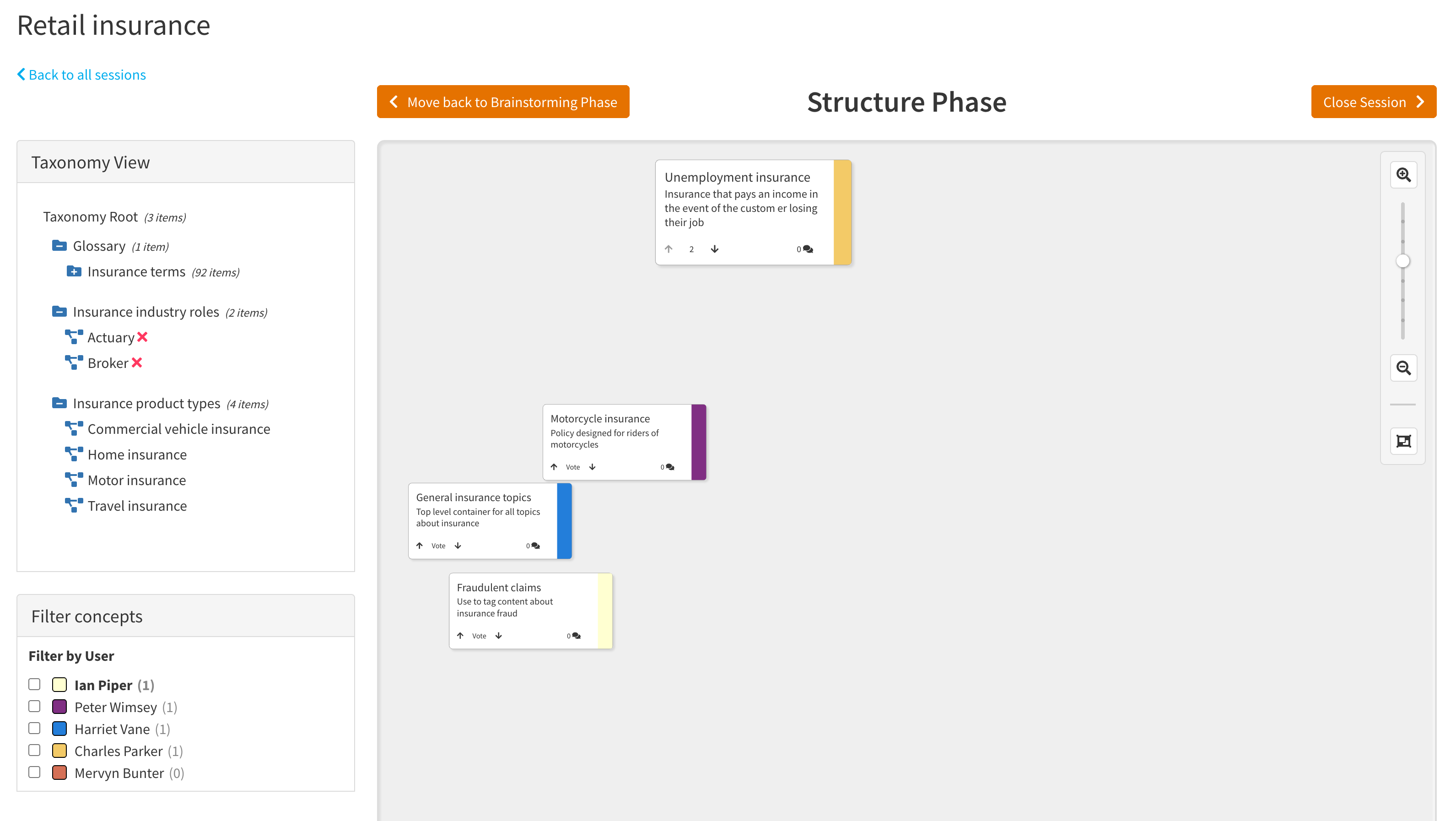
You will also notice that we have a taxonomy hierarchy visible at the top left. This is a view into the taxonomy project in PoolParty. If you look at the PoolParty interface at this stage, you'll see this:

The hierarchy is the same in both locations. And this is where the real time-saving comes in with CardSorting; in the Structure phase you can drag and drop an approved card directly into the taxonomy hierarchy and at the same time it will appear in PoolParty. For example, let's say we want Motorcycle insurance to be a new concept below Motor insurance. You simply drag the card off the workspace and drop it over the Motor insurance concept in the hierarchy. It's hard to show drag and drop in a screenshot, but here are the before, during and after steps.
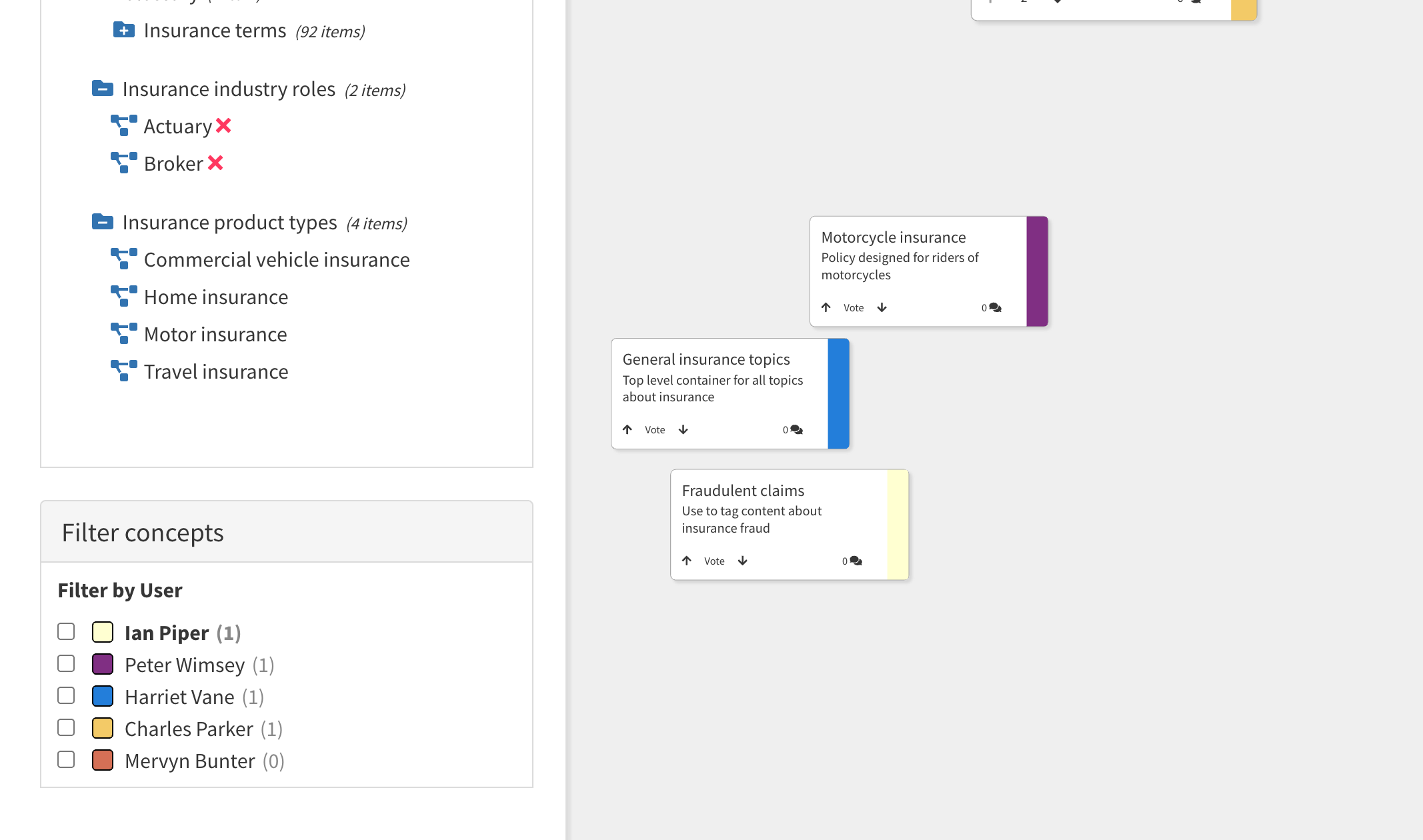
Here I'm dragging the card over to Motor insurance. The destination point in the hierarchy is highlighted (actually the whole hierarchy is highlighted to avoid ambiguity).
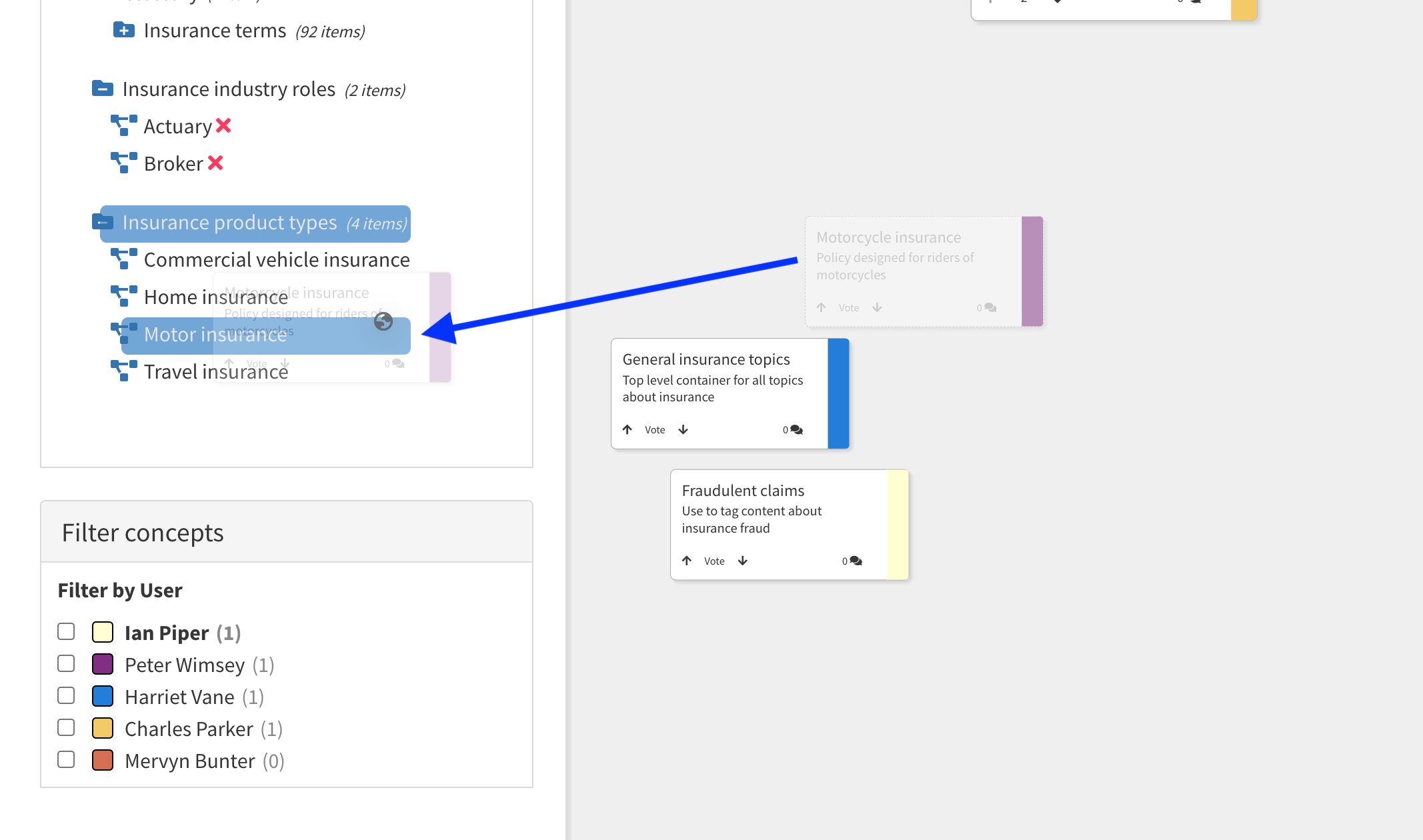
Here is the result. Motorcycle insurance is now a narrower concept of Motor insurance. The card has also disappeared from the CardSorting workspace.
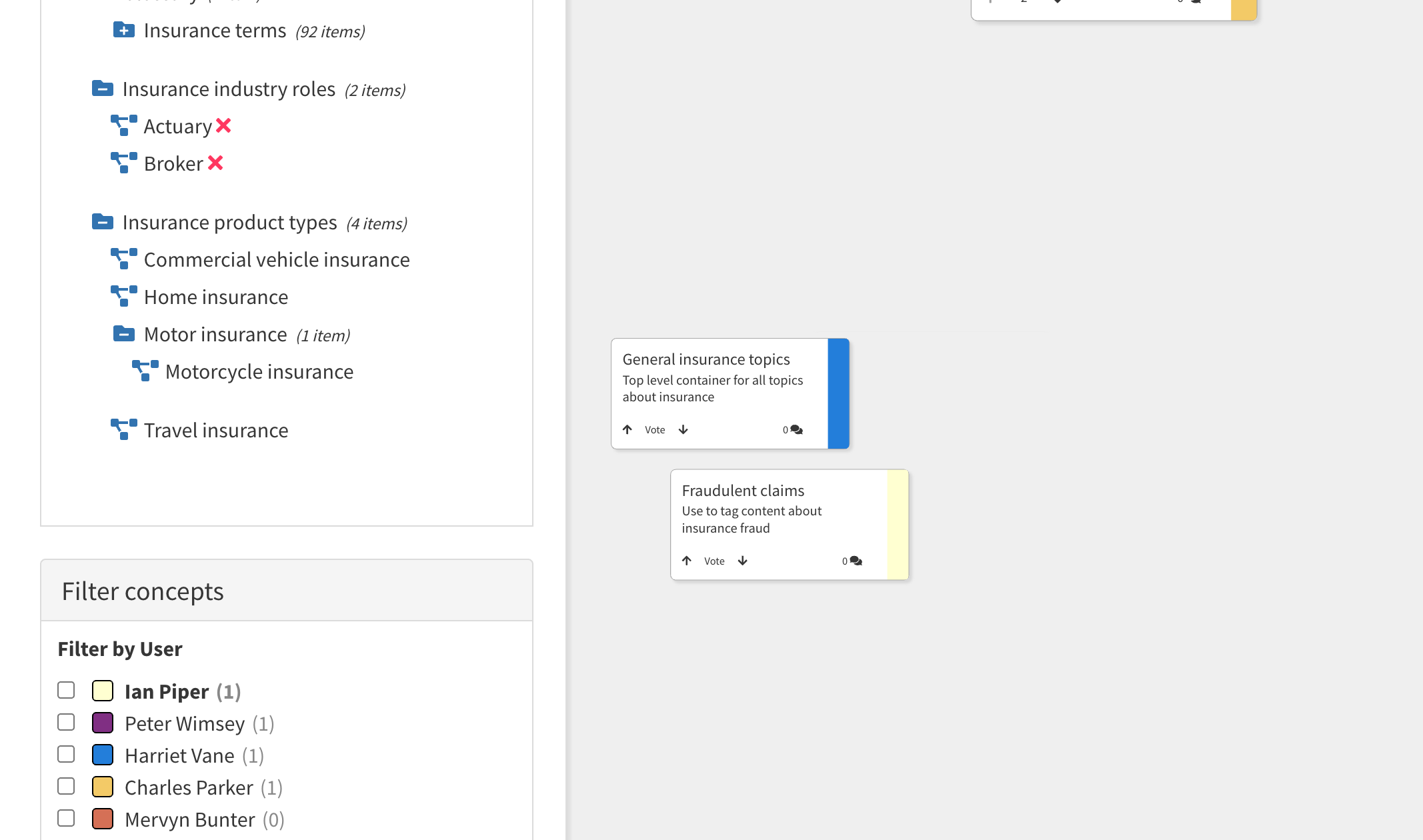
Finally, this is how it looks in PoolParty.
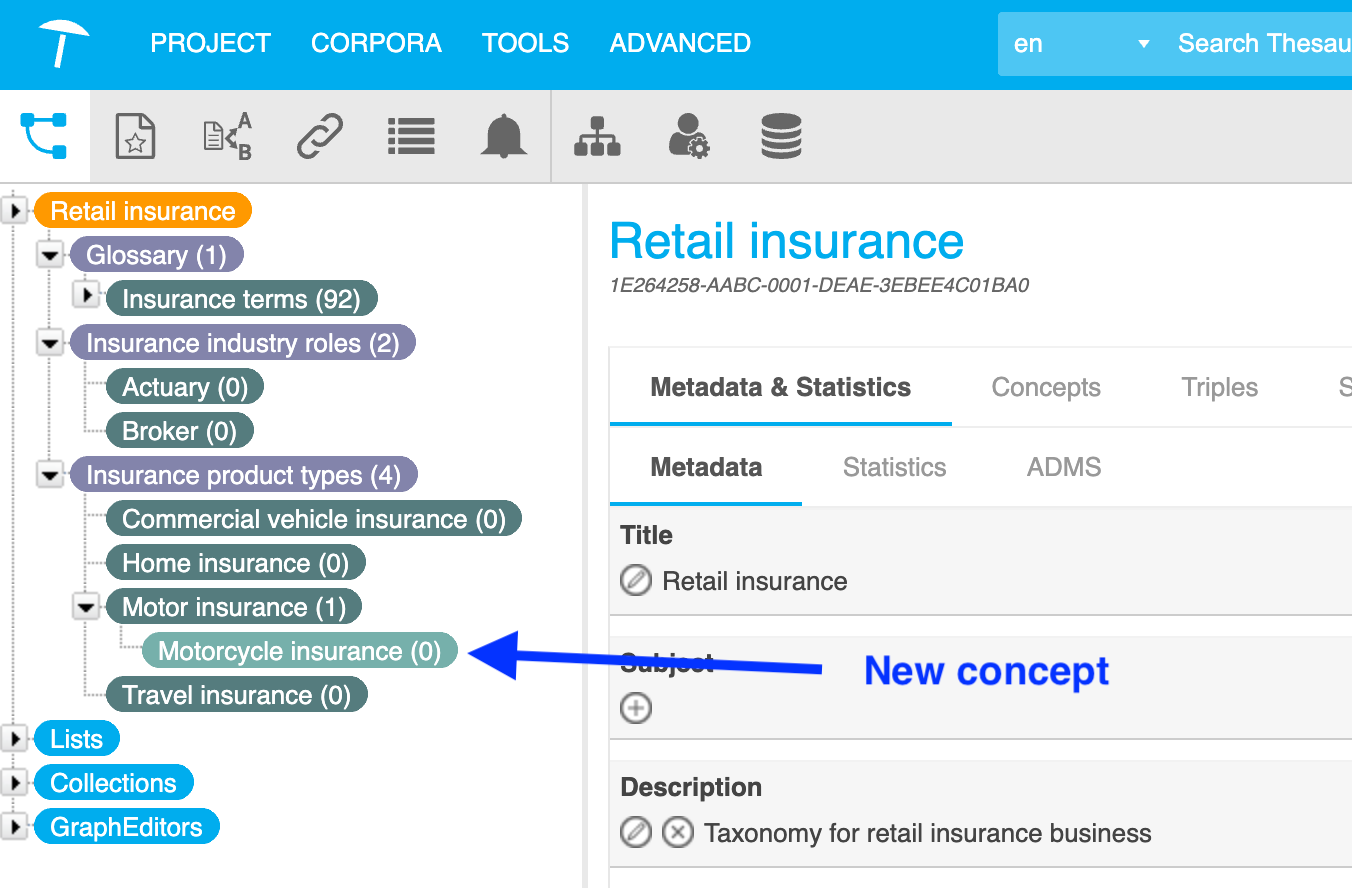
By the way, once you have finished adding concepts from the Structure phase workspace into PoolParty, you can move back to the Brainstorming phase to review or add further concepts. This means that you can use CardSorting in an iterative fashion; one use case might be to work on different parts of the taxonomy successively, working on one part of the tree, adding it to PoolParty then going back to brainstorm another part of the tree.
Summing up
So to summarise the process:
- A team of subject matter experts (not taxonomists) take part in a card sorting exercise to build a taxonomy. The build process takes place entirely in an intuitive, interactive, multi-user workspace.
- Team members never need to see the PoolParty interface; that is designed for taxonomists.
- Team members use the Brainstorming phase first to come up with new concept ideas, discuss, and approve or reject the suggested ideas. The ideas that are approved are sent to the Structure phase workspace, from where they can be moved directly into the PoolParty taxonomy.
- Once in PoolParty, the taxonomist can refine and enhance the basic taxonomy.
OK, that's it for this article. I hope you can see that PoolParty CardSorting is an excellent way to involve general business users in the design and build of a new taxonomy, and it's a real time-saver for the working taxonomist. Feel free to get in touch if you think it could be useful to you.
Thanks for reading this article.
